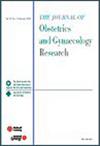Vaginal metabolic profiling reveals biomarkers characteristics of high-risk HPV infection and cervical lesions
Abstract
Objective
This study aimed to identify potential biomarkers in high-risk human papillomavirus (HR-HPV) infections and related cervical lesions through the analysis of vaginal metabolic profiles.
Patients and methods
Forty cervicovaginal secretion samples were collected from healthy individuals, HR-HPV-positive individuals, low-grade squamous intraepithelial lesion patients, high-grade squamous intraepithelial lesion patients, and cervical cancer (CC) patients. All samples were analyzed using liquid chromatography–mass spectrometry (LC–MS). Metabolites with significant differences were identified using the variable importance in projection (VIP > 1) derived from the orthogonal least partial squares discriminant analysis (OPLS-DA) model and the p-value (p < 0.05) of the Student's t test. Utilizing hierarchical cluster analysis and receiver operating characteristic curve analysis, the optimal biomarkers were identified, and the diagnostic potential of these biomarkers was evaluated. Significantly enriched pathways of the differential metabolites were explored using metabolic pathway analysis.
Results
LC–MS analysis of the vaginal metabolomic profiles revealed unique molecular characteristics of different states of HR-HPV infection. Based on persistent HR-HPV infection, 3-Isochromanone increased, and DG(2:0/5-iso PGF2VI/0:0) and (4R,5S,7R,11x)-11,12-Dihydroxy-1(10)-spirovetiven-2-one 12-glucoside decreased (p < 0.05) with the aggravation of cervical lesions, suggesting their potential as biomarkers to predict various stages of cervical lesions. Additionally, analysis of metabolic pathway enrichment for differential metabolites identified the phenylalanine, tyrosine, and tryptophan biosynthesis pathways as the key metabolic pathways in the progression of cervical lesions.
Conclusion
By measuring the metabolome of vaginal secretions, specific metabolites can effectively distinguish persistent HR-HPV infections and different grades of cervical lesions, which may become an important means for the early screening and diagnosis of CC.




 求助内容:
求助内容: 应助结果提醒方式:
应助结果提醒方式:


